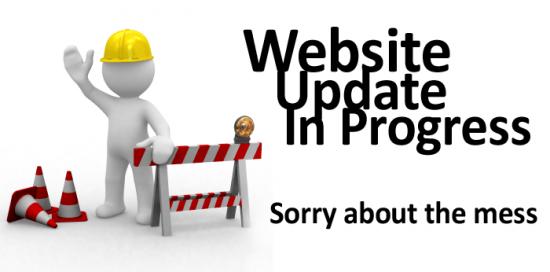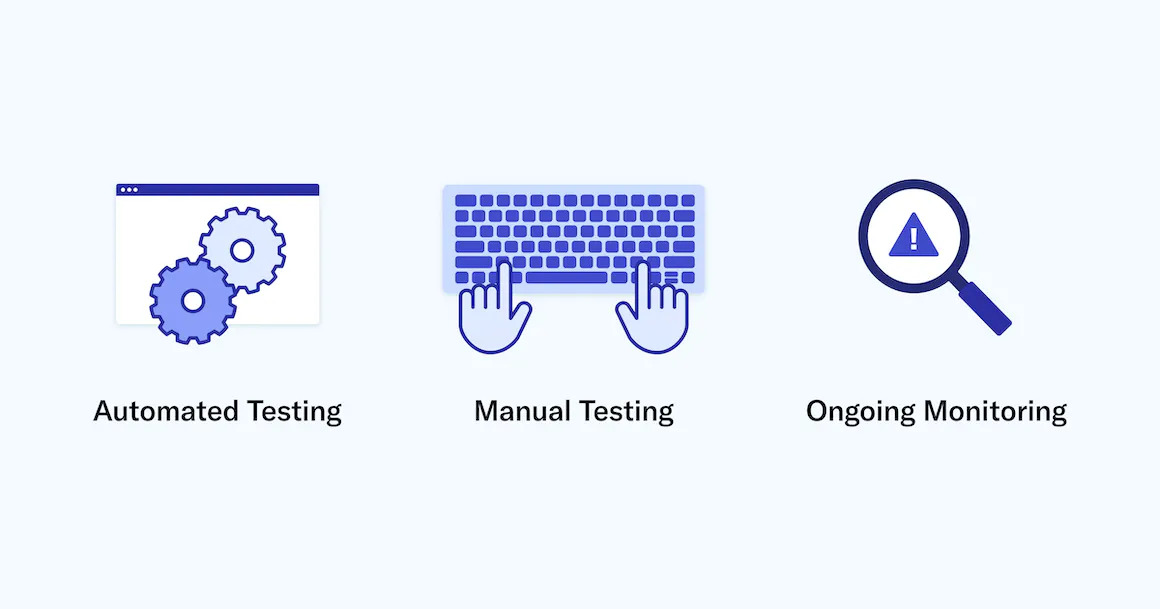Updating a website is a critical task that requires careful consideration and planning. In today's fast-paced digital world, it is essential to keep your website fresh, engaging, and aligned with the ever-evolving needs of your target audience.
However, before diving into major website changes and knowing how to update website, it is important to assess several key factors that can significantly impact the success of your updates. By understanding these factors and incorporating them into your decision-making process, you can ensure that your website changes are purposeful, effective, and yield the desired outcomes.
10 Ways On How To Update Website
When it comes to making significant changes to your website, thorough consideration is key to ensuring a successful outcome. Every aspect of your website, from its purpose to its design and features, plays a crucial role in achieving your organization's goals and providing a positive user experience.
By carefully examining the following ten factors, you can make informed decisions that align with your objectives and enhance your online presence.
Site Purpose
The purpose of your website serves as its foundation and gives it a sense of direction. Similar to a mission statement, the site's purpose defines its primary reason for existence in the digital world. Understanding and clearly defining your website's purpose is essential as it informs all subsequent design and contentdecisions.
Whether your website aims to educate, advocate, provide services, or facilitate community organizing, having a clear sense of purpose ensures that your website effectively serves its intended function.
Target Audiences
Identifying your target audiences is crucial for designing a website that effectively engages and meets the needs of your intended users. While it may be tempting to say that your target audience is "everyone," it's important to recognize that designing with such a broad focus may dilute your messaging and make it challenging to achieve specific goals.
Instead, narrow down your target audiences to the top two or three groups that are most important for your organization. By understanding the characteristics, needs, and preferences of these specific audience segments, you can tailor your website's design, content, and functionality to effectively engage them.
Site Objectives
Just like the objectives outlined in your organization's strategic plan, your website should have clear objectives that align with your overall goals. Start by considering the actions you want your target audiences to perform when they visit your website.
Additionally, identify the actions that you want these audiences to take to support your organization's objectives. By answering these questions, you can set measurable goals for your website, which will guide the design and content creationprocesses.
Regularly revisiting these objectives during the development and maintenance of your website ensures that your design decisions align with your desired outcomes.
Responsive, Mobile-Friendly Design
In today's digital landscape, responsive and mobile-friendly design is no longer optional; it's a necessity. With the increasing prevalence of mobile devices for internet browsing, your website must provide a seamless user experience across different screen sizes and devices.
Responsive design ensures that your website automatically adjusts its layout, images, and content to fit the screen it is being viewed on. While retrofitting an existing website with responsive design can be challenging, it is often more cost-effective to consider a complete redesign.
By adopting a responsive approach, you provide a consistent and user-friendly experience to all visitors, regardless of the device they use.
Fresh Content
Keeping your website's content up to date is crucial for attracting and retaining visitors. Just as museums rotate their exhibits to provide new experiences, your website should offer fresh and relevant content to keep visitors engaged and encourage repeat visits.
Developing a content strategyfor your website allows you to plan and create valuable content that aligns with your target audience's interests and needs. By consistently providing new and informative content, you can establish your website as a valuable resource and encourage visitors to return regularly.
Engaging Content
While having fresh content is important, it is equally crucial to make it engaging and easily consumable. Research shows that users typically read only about 20-28% of the text on a web page.
To capture and maintain users' attention, consider using shorter blocks of text, breaking up content with headings, bullet points, and visuals, and incorporating multimedia elements like images, videos, and infographics. Engaging content not only improves user experience but also helps convey your message effectively and increases the chances of your audience absorbing and retaining information.

How to Create Content for SEO
Features
Website features are the dynamic elements that make your site more interactive, functional, and interesting for visitors. These features can include donation buttons, online forms, embedded videos or podcasts, online quizzes, social mediabuttons or integration, and various other gadgets and widgets.
It is important to determine the features you want to include in your website in advance to ensure a coherent design and smooth user experience. Consider the needs of your target audiences and the objectives of your website when selecting and implementing these features.
By carefully planning and integrating the right features, you can enhance user engagement and achieve your desired outcomes.
Search Engine Optimization (SEO)
Search Engine Optimization(SEO) plays a crucial role in driving organic traffic to your website. Studies indicate that 68% of internet users start their online experience with a search engine.
To ensure your website ranks well in search engine results, it is essential to optimize it for search engines. While there are professional SEOservices available, they may exceed the budget of most nonprofit organizations. However, many SEOtasks can be performed by you or your web developer.
These tasks include optimizing page titles and meta descriptions, using appropriate keywords throughout your content, optimizing image alt tags, and improving website loading speed. By implementing these SEO practices, you can increase the visibility and discoverability of your website.
Site Maintenance
Maintaining your website is an ongoing commitment that requires time, resources, and careful planning. When making changes to your website, it is important to consider the long-term maintenance needs and associated costs.
Traditionally, website updates required the assistance of a developer, but modern Content Management Systems (CMS) like WordPressempower organizations to handle updates themselves.

SEO Basics: Why Your Site Needs Maintenance
By using a CMS, you can have control over your website's content and easily make regular updates without relying on external developers. However, it is crucial to identify the staff member(s) responsible for maintaining the website after launch and clarify their roles and responsibilities.
Accessibility
Creating an inclusive online environment is not just a legal obligation but also a moral responsibility. Section 508 of the Americans with Disabilities Act (ADA) outlines guidelines for making websites accessible to individuals with disabilities. As a nonprofit organization committed to social justice, ensuring accessibility on your website is vital.
Accessible websites allow all users, regardless of disabilities, to navigate, understand, and interact with your content effectively. To ensure accessibility, consider factors such as providing alternative text for images, using proper heading structure, ensuring color contrast, and implementing keyboard accessibility.
By embracing accessibility, you demonstrate your commitment to inclusivity and cater to a wider audience.
These ten factors help create a strategic plan that aligns with your goals and maximizes the impact of your digital presence by making major changes to your website. Each factor contributes to different aspects of your website's functionality, usability, and user experience.
By understanding your website's purpose, identifying your target audiences, setting clear objectives, adopting responsive design, providing fresh and engaging content, incorporating relevant features, optimizing for search engines, planning for site maintenance, and ensuring accessibility, you can make informed decisions that drive success for your organization's online presence.
People Also Ask
What Are The 5 Factors Of Website Design?
When constructing a website, there are five essential factors to take into account:
- Visual Aspects of the Website- The design of your website encompasses various elements, including the arrangement of content, color scheme, and the degree of contrast employed.
- Mobile-Friendly Website- In today's era, people extensively utilize mobile devices for internet browsing. Hence, ensuring that your website is compatible and user-friendly on mobile platforms is of utmost importance.
- Intuitive Website Navigation- A well-structured and easy-to-navigate website is crucial for providing a seamless user experience. Users should be able to locate information effortlessly and find their way around the site without confusion.
- High-Quality Website Content - Compelling and informative content plays a pivotal role in engaging visitors and delivering your message effectively. Focus on providing valuable information that is relevant to your target audience.
- Website Security- Safeguarding your website and protecting user data is vital. Implementing appropriate security measures, such as encryption protocols and secure hosting, helps maintain the integrity and trustworthiness of your website.
What Is Required To Make Changes In Website?
To make changes to a website, you need to perform the following steps:
- Edit the HTML- Locate the specific element you want to modify on the website. Right-click on the element and choose the option "Edit as HTML" from the menu that appears. This will allow you to access and edit the underlying HTML source code.
- Apply desired changes- Once you have entered the HTML editing mode, you can make the necessary modifications to the source code to achieve the desired effect or update the content.
- Finalize the changes- After making the desired changes, click outside the HTML editor or save the modified HTML file. This will complete the process, and the website will reflect the updated content or design based on the modifications you made.
What Is The Most Important Factor In A Website?
The following are the four crucial factors for any website:
- User navigation / Internal Linkings
- Content Or Message
- Responsive Layouts
- Site Loading Speed
What Are The Key Factors Of A Good Website?
A great website possesses seven crucial qualities that contribute to its success:
- Well-Designed and Functional
- User-Friendly
- Mobile-Optimized
- Fresh, High-Quality Content
- Accessible Contact and Location Information
- Clear Calls to Action
- Optimized for Search and Social Media
Conclusion
When it comes to updating a website, knowing how toupdate website is crucial to approach the process strategically and consider multiple factors that influence its success.
By understanding your website's purpose, identifying your target audiences, defining clear objectives, adopting responsive design, providing fresh and engaging content, incorporating relevant features, optimizing for search engines, planning for site maintenance, and ensuring accessibility, you can make informed decisions that result in a website that effectively serves your organization's goals.
Remember, website updates should be driven by a deep understanding of your audience's needs and an unwavering commitment to delivering an exceptional user experience. With these considerations in mind, you can embark on website changes that propel your organization forward in the digital realm.



